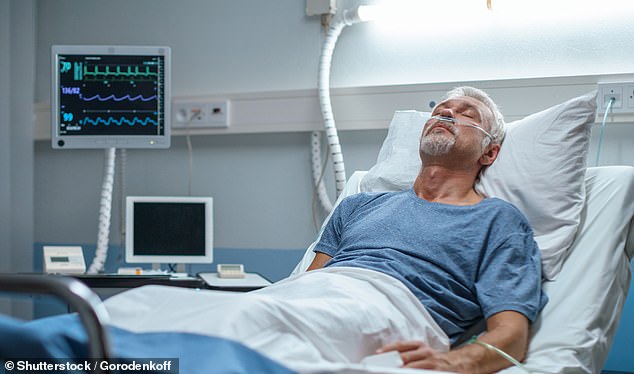Forty new hospitals, greater use of cutting-edge technology and a digital revolution that will benefit NHS staff and patients.
That’s what is being promised under the Government’s Health Infrastructure Plan, a £3.7 billion project unveiled at the end of 2020 to drag Britain’s crumbling hospital network into the 21st century.
But what are some of the technological innovations that could turn NHS hospitals into beacons of modern medicine?
Noise-busting bedside panels
Excess noise is a major bugbear for in-patients. Data from the Care Quality Commission — which polices NHS standards — shows 40 per cent experience disruptive noise from other patients at night. In intensive care, noise levels have reached 100 decibels, the same as a pneumatic drill.
The solution: Trials are under way at two NHS hospitals, St George’s in London and the Royal Sussex in Brighton, to see if noise-cancelling screens placed around patients’ beds, or in front of air-conditioning units, can help.
The screen, called Sonoblind, is made from 3D-printed plastic ‘bricks’ that slot together to make panels that deflect sound. They can also be translucent, to let light through, and have tiny pores to let air flow. If successful, the screens could be rolled out across the NHS in the next few years.

Data from the Care Quality Commission — which polices NHS standards — shows 40 per cent experience disruptive noise from other patients at night [File photo]
‘Watch’ that checks for clots
Patients lying still in bed recovering from surgery are at increased risk of deep vein thrombosis (DVT) — a potentially fatal blood clot in the lower leg.
Many are injected with blood-thinning drugs to stop clots forming, or wear compression stockings, which squeeze the calf and keep blood moving. Electronic pumps, which also squeeze the calf, are sometimes used in hospitals but are not suitable for those with leg ulcers or broken skin.
The solution: Some NHS trusts already deploy a hi-tech gadget, called Geko, which looks like a wrist-watch but is stuck on (with adhesive pads) below the knee.
The device sends a constant stream of electric pulses through the skin to stimulate a nerve that activates muscles in the lower leg, squeezing veins and keeping blood moving. It can be used at home, so patients are discharged sooner.
Daylight to speed up recovery
Many Victorian-era NHS hospitals are poorly lit and patients and staff can go hours without seeing any natural light. Yet studies show exposure to daylight can aid patients’ sleep, ease anxieties and speed up recoveries.
Research shows those in east-facing hospitals spend an average of 2.6 days less in hospital than those pointing elsewhere, as they are exposed to more daylight as the sun moves across the sky.
The solution: The Royal Marsden Hospital in Surrey — one of the UK’s leading cancer centres — is opening a new outpatient treatment unit with floor-to-ceiling windows and a glass roof.
It says exposure to natural light keeps patients facing gruelling regimens relaxed and calm.

Research shows those in east-facing hospitals spend an average of 2.6 days less in hospital than those pointing elsewhere, as they are exposed to more daylight as the sun moves across the sky
‘Smart’ beds that aid healing
Beds are a key part of any patient’s stay in hospital — it’s where they spend the most time.
But NHS beds have remained largely unchanged for decades, despite the population getting older, fatter and taller as a whole.
The solution: A new generation of ‘smart’ beds is in development. Some will automatically adjust the mattress position to move the patient — and reduce the risk of DVT — while others will be equipped with sensors to monitor vital signs such as heart rate.
The Royal Lancaster Hospital has been trialling beds with thermal sensors to detect the patient’s outline and send a warning to nurses’ screens if a patient shows signs of falling, or wandering off.
Source link : https://www.dailymail.co.uk/health/article-9898887/The-hi-tech-hospitals-transforming-patient-care.html











